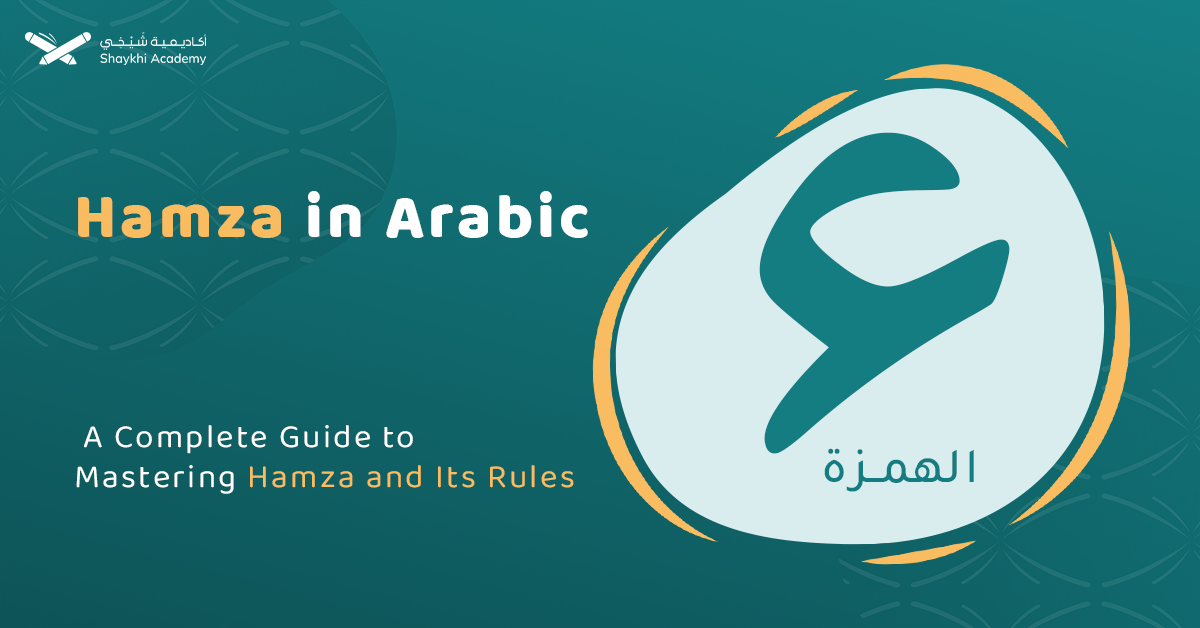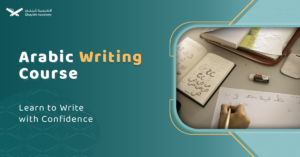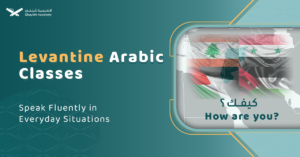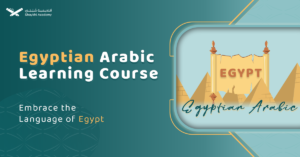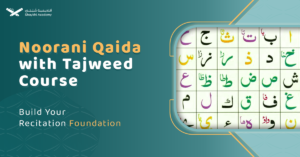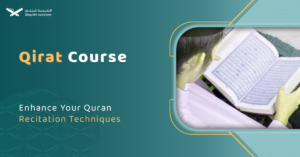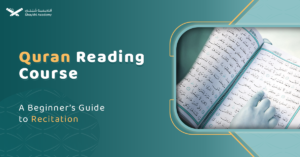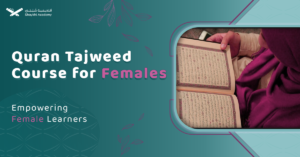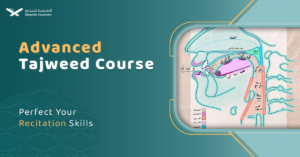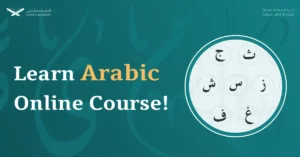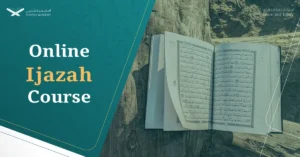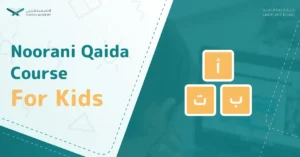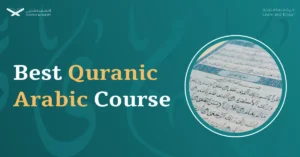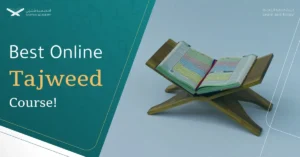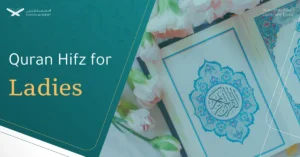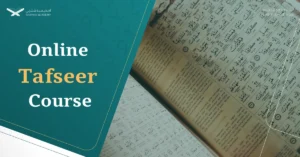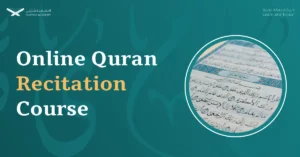Hamza (ء) is a unique Arabic letter that appears in initial, medial, or final positions within words, adapting its form based on surrounding letters and vowels. It may rest on Alif (أ), Wow (ؤ), or undotted Ya (ئ), or appear on the line (ء), depending on specific grammatical rules. For example, it sits on Alif in “رأس” (head), on Wow in “فؤاد” (heart), and on undotted Ya in “بئر” (well). Learning these variations is essential for mastering Arabic pronunciation, writing, and grammar, and courses like those offered by Shaykhi Academy can simplify this intricate topic.
The Arabic language, the language of the Quranis one of the most ancient languages. It’s a coherent and integrated language with many rules. The rules always explain the Harakat (diacritical mark), the pronouns, or the Hamazat. The Hamza is one of the alphabets. It is also named Alef and is written like that (ء). What is the reason the Arabic language contains Hamza? And what are its types? In this article, we will discuss all of this.
Definition Of Hamza In Arabic:
The Hamza (ء) is an essential letter in the Arabic alphabet, functioning similarly to Alif. It can appear in various forms and positions within words, serving crucial roles in pronunciation and grammar.
Based on its location, Hamza can be classified into three main types: Initial Hamza, Middle Hamza, and Final Hamza.
Each type has specific writing rules and forms, including combinations with letters like Alif, Wow, and Ya.
Types Of Hamza In Arabic
The Hamza is unique in that it can be written in different shapes depending on the surrounding letters and the diacritical marks that influence its pronunciation.
For example, an Initial Hamza can appear as Hamzatul Qat (أ) or Hamzatul Wasl (ا), while Middle and Final Hamzas can take various forms such as (ء, ؤ, ئ, or أ).
1. Hamza with Alif
The Hamza is written above Alif which is based as Kursi (Chair) to it. It could be written below based on Haraka. For example:
| Human | إنسان |
| Head | رأس |
2. Hamza with Wow ؤ
Hamza can take Wow as Kursi (Chair) too and Hamza takes the vowel Wow in this case. For example:
| Heart | فؤاد |
| Pearl | لُؤلُؤ |
3. Hamza with undotted Ya ئ
Hamza could lay on undotted Ya in some cases and still be pronounced as it is. For example:
| Well | بئر |
| Benefit | فائِدة |
Different Forms of The Hamza
The Hamza can take different forms depending on its position in a word and the surrounding vowels or letters. In the following, we will discuss the differences between Initial, Middle, and Final Hamza.
Let’s Break down these points in detail:
Initial Hamza
Initial Hamza located on or below Alif, never on the line, Wow or Ya. If the diacritical mark is Dhamma or Fatha the Hamza is located on Alif (أَ, أُ), and if the diacritical mark is Kasra the Hamza is located below Alif (إِ). This Hamza is called Hamzatul Qat or Hamzat of Disjunction.
Hamza (ء) is sometimes unwritten above or below Alif if it was Hamzat Al-Wasel or Hamzat of Conjunction.
1. Hamzatul Qat
Hamzatul Qat is the one where the Hamza (ء) is written at the top of the Alf (ا) like this (أ) like in the word:
| Taken | أُخِذ |
2. Hamzatul Wasl
Hamzatul Wasl is the one written like this (ا) like in the word:
| Write | اكتب |
Middle Hamza Forms
Middle Hamza has four shapes: (ء, أ, ئ, ؤ). Examples of The Middle Hamza types:
1. The Middle Hamza on Undotted Ya
The Middle Hamza on undotted Ya is the Hamza (ء) written on undotted Ya (ى) like that (ئ). It’s written like that If the diacritical on or before the Hamza is Kasra. For example:
| The one who asks | سائِل |
| Appearance | هيئة |
| His Calm | هدوئه |
2. The Middle Hamza on Wow
The Middle Hamza on Wow is the Hamza (ء) written on Wow (و) like that (ؤ). It takes this shape If the diacritical on or before the Hamza is Dhamma, It will placed on Wow (ؤ). For example:
| Question | سؤال |
| Optimism | تفاؤل |
| Heart | فؤاد |
3. The Middle Hamza on Alf
The Middle Hamza on Alf is the Hamza (ء) written on Alf (ا) like that (أ). It is based on Alif If the two rules above do not apply, then the Hamza is found on Alif unless it is followed by a long vowel. For example:
| Ask | سأل |
| Mattar | مسألة |
4. The Middle Hamza on the Line
The Middle Hamza on the Line is the Hamza (ء) written as it is. This happens If the first two rules do not apply and Hamza is followed by a long vowel. For example:
| Effectiveness | كفاءة |
| Accountability | مساءلة |
| Inquiry | تساءُل |
Final Hamza Forms
If the Hamza is founded at the end of a word it is named (Final Hamza). It could be written like the middle Hamza (ء or ؤ or ئ or أ) according to the rule.
1. The Final Hamza on Alf
The Final Hamza on Alf is the Hamza (ء) written on Alf (ا) like that (أ). For example:
| Grown-up | نشأ |
2. The Final Hamza on Wow
The Final Hamza on Wow is the Hamza (ء) written on Wow (و) like that (ؤ). For example:
| Dare | يجرؤ |
3. The Final Hamza on Undotted Ya
The Final Hamza on Undotted Ya is the Hamza (ء) written on undotted Ya (ى) like that (ئ). For example:
| Calm | هادئ |
4. The Final Hamza on Line
The Final Hamza on Line is the Hamza (ء) written as it is. It is written at the end of a word following a long vowel or Sukun. For example:
| Part | هدوء |
| Lightening | تضيء |
| Green | خضراء |
5. Final Hamza with Tanween
Tanween has to do with the sound Noon (ن) and it has important rules in Tajweed. This noon is added to the end of nouns only. You can learn more about Tanween in Tajweed courses with Shaykhi Academy. When Tanween is added to a word ending with Hamza, Unpronounced Alif is added to the end after Hamza. For example:
| Part | جزءًا |
| Beach | شاطئًا |
If the letter before Hamza is Alif or the Hamza is written on top of Alif no other Alif is added to the end only Tanween mark. For example:
| Water | ماءً |
| Origin | منشأً |
| Air | هواءً |
Difference Between The Hamza and The Alif
The Alif is the first letter in the Arabic alphabet (Alif, Ba, Ta, …) and the Alif could be Hamza or Alif Al-Madd. This is determined by the shape, the position of the word, and the diacritical mark at the letter before.
1- The Hamza
The Hamza in Arabic grammar is called firm Alif and goes along with short vowels. Here are some examples of the Hamza in different positions:
a- The Hamza Goes Along with Short Vowel Fatha
| I ate the orange | أَكلت البرتقالة |
| The teacher comes | جاءَ المدرس |
| The lecture started | بدَأت المحاضرة |
| We asked Sheikh | سَأَلنا الشيخ |
| I’m listening to the Quran every day | أَستمع إلى القرآن كل يوم |
b- The Hamza Goes Along with Short Vowel Kasra
| I go to home | أَذهب إِلى البيت |
| Open the door | اِفتح الباب |
| Listen to the liston | اِسمع الدرس |
| I went to the Masjed | ذهبت إِلى المسجد |
c- The Hamza Goes Along with Short Vowel Dhamma
| Write the lesson | اُكتب الدرس |
2- The Alif
The Alif in Arabic grammar is called the flaccid Alif or Alif Layyinah and always goes along with Saakin that isn’t have any vowels. The Alif could be found in the middle or at the end of words. For example:
| The girl stood up | قامت البنت |
| Ayman made Doa’a to his teacher | دعا أيمن لمدرسه |
How to Write Hamza?
The Hamza has many different shapes according to the position as mentioned before. You can join a course like Learn Fusha Arabic and MSA which will help you to know how to write Arabic letters and in the following part we will learn the rules you must know to write Hamza in the correct way.
1- Initial Hamza
The two shapes of Initial Hamza are Hamzatul Wasl and Hamzatul Qat.
A- Hamzatul Wasl
Hamzatul Wasl is the Hamza found at the first of words started with Sukun -has no vowel-. This Hamza is written and we don’t pronounce it. For example:
| Your Name | اسمك |
| Play | العب |
You can write it according to these rules:
a- Imperative of Verb I
Examples of the Triliteral Imperative Verbs:
| Write | اكتب |
| Read | اقرأ |
| Listen | اسمع |
b- Past and Imperative of Verbs V and VI and their Gerunds
Examples of the Past and Imperative of Verbs V and VI and their Gerunds:
| Used | اِستخدمَ |
| Use | استخدمْ |
| Usage | اِستخدام |
c- Known Names
The Known Names are:
| Son | ابن |
| Daughter | ابنة |
| Two | اثنان واثنتان |
| Ayman Allah | ايمن الله |
| Aym Allah | ايم الله |
| A Man | امرؤ |
| A Woman | امرأة |
d- Litters
It’s only one letter (ال) (The) that defines Arabic words for example:
| The Book | الكتاب |
| The Information | المعلومة |
B- Hamzatul Qat
Hamzatul Qat is a fixed Hamza in pronunciation which means it’s written and pronounced too. It may come with Fatha like:
| He Came | أَقبل |
or with Kasra like:
| Coming | إِقبال |
2- Middle Hamza
The Middle Hamza follows the diacritical mark on the letter before. The diacritical marks in the Arabic language have powers and rank as follows: Kasra (ِ), Dhamma (ُ), Fatha (َ), and Sukun(ْ). Examples of it:
a- Hamza on the top of undotted Ya
Hamza can be written on the top of undotted Ya like (ئ) according to these rules:
1- Hamza has no vowel or Haraka and the letter before has Kasra like:
| A Well | بِئْر |
2- Hamza has Fatha and the letter before has Kasra like:
| Harmony | وِئَام |
3- Hamza has Dhamma and the letter before has Kasra like:
| He Hides it | يُخَبِئُه |
4- Hamza has Kasra and the letter before has Kasra like:
| You Made a Mistake | تُخْطِئِينَ |
5- Hamza has Kasra and the letter before has Sukun like:
| Characteristics | شَمَاْئِل |
6- Hamza has Kasra and the letter before has Fatha like:
| Roar | زَئِير |
7- Hamza has Ksara and the letter before has Dhamma like:
| She Had Been Asked | سُئِلَتْ |
8- Hamza has Fatha and the letter before is Ya like:
| A Will | مَشِيئَة |
b- Hamza on the top of Wow
Hamza can be written on the top of Wow like (ؤ) according to these rules:
1- Hamza has Sukun and the letter before has Dhamma like:
| Moa’men | مُؤمِن |
2- Hamza has Fatha and the letter before has Dhamma like:
| Compose | يُؤلِف |
3- Hamza has Dhamma and the letter before has Sukun like:
| Responsible | مسْؤُول |
4- Hamza has Dhamma and the letter before has Fatha like:
| Leading | يَؤُم |
5- Hamza has Dhamma and the letter before has Dhamma like:
| Affairs | شُؤُون |
6- Hamza has Dhamma after Alif like:
| It’s Air | هواؤه |
c- Hamza on the top of Alif
Hamza can be written on the top of Alif like (أ) according to these rules:
1- Hamza has Sukun and the letter before has Fatha like:
| Head | رَأْس |
2- Hamza has Fatha and the letter before has Sukun like:
| Mattar | مسْأَلة |
3- Hamza has Fatha and the letter before has Fatha too like:
| He Kept on Doing It | دَأَبَ |
d- Hamza on the Line
Hamza can be written on the line like (ء) according to these rules:
1- Hamza has Fatha after Alif like:
| Cloak | عباءَة |
2- Hamza has Fatha after Wow like:
| Chivalry | مروءَة |
3- Final Hamza
The final Hamza could be written as follows:
a- Similar to the diacritical mark before
1- The Final Hamza follows a letter that has Dhamma it will be written on Wow like (ؤ) for example:
| Dair | يجرُؤ |
2- The Final Hamza follows a letter that has Fatha it will be written on Alif like (أ) for example:
| Start | يبدَأ |
3- The Final Hamza follows a letter has Kasra it will be written on undotted Ya like (ئ) for example:
| Make Fun Of | يستهزِئ |
b- Written on the Line
The Hamza could be written on the line if it follows Sukun for example:
| Part | جزْء |
| Calm | هدوْء |
c- Written on undotted Ya
The Hamza could be written on an undotted Ya if comes with a Tanween in the accusative case after a silent letter. It’s written on the undotted Ya between Alif Al-Tanween and the letter before if it is possible. For example:
| Something | شيْئَا |
In some cases, the letter before the Hamza doesn’t connect like (د, ذ, ر, ز …). In this case, the Hamza is written on the line for example:
| Starting | بِدءًا |
Join Online Arabic Classes And Lessons with Shayki Academy
Online Arabic classes and Lessons with Shayki Academy are offered under the supervision of native teachers focusing on vocabulary, Nahw (Arabic Rules), pronunciation, writing, reading, and comprehension. These are fundamental aspects of the language. The classes can help learners at different levels.
Courses in Shaykhi Academy utilize a variety of teaching methods and have a variety of lesson times wish can suit your busy life. Don’t hesitate to ask about different course plans.
Why Shaykhi Academy?
- Expert Native Tutors: Learn from highly qualified native Arabic speakers.
- Flexible Scheduling: Tailor your classes to fit your busy life.
- Affordable Learning: Access top-quality education at a price that suits you.
- Global Access: Study from anywhere in the world.
Explore Our Arabic Courses:
- Noorani Qaida: Build a strong foundation in Quranic Arabic.
- Comprehensive Arabic Courses: Master the Arabic language, from beginner to advanced levels.
- Fusha Arabic Classes: Delve into Modern Standard Arabic, the key to understanding literature, media, and formal communication across the Arab world.
- Quranic Arabic Course: Enhance your connection with the Quran by learning the language in which it was revealed.
Start Your Arabic Journey Today! Whether you’re just starting or looking to deepen your knowledge, Shaykhi Academy is here to support your journey. Book your free trial now and begin your path to Arabic mastery!

Conclusion
Hamza (ء) is a pivotal letter in Arabic, taking different forms and positions within words. Based on its location, it can appear as Initial, Medial, or Final Hamza, each with unique rules for writing and pronunciation. Initial Hamza, seen as Hamzatul Wasl (ا) or Hamzatul Qat (أ), is attached to Alif and varies based on diacritical marks like Fatha, Kasra, or Dhamma. Medial Hamza adapts to surrounding letters and vowels, appearing on Alif (أ), Wow (ؤ), or undotted Ya (ئ), depending on specific grammatical rules. Final Hamza similarly aligns with preceding vowels, taking forms like (أ, ؤ, or ئ) or standing alone as (ء).
Hamza also interacts with supporting letters (Alif, Wow, and Ya) in versatile ways. For instance, it may sit on Alif for clarity, on Wow when influenced by Dhamma, or on Ya when Kasra predominates. Unique cases include its placement on a line or its use with Tanween in words like “جزءًا” and “هدوء”. Differentiating Hamza from Alif, which lacks short vowels and represents long vowels (Alif Layyinah), is crucial for mastering Arabic. Comprehensive courses, like those at Shaykhi Academy, provide structured guidance in learning Arabic’s nuances, including Hamza rules, Nahw, and pronunciation.
The Arabic language has different rules that explain the Harakat (diacritical mark), the pronouns, or the Hamazat. Hamza is a part of the alphabet it is also named Alif and is written as (ء). Hamza comes in different shapes according to its position on the word.
Initial Hamza at the beginning of the word, Middle Hamza, and Final Hamza. The shape of Hamza follows some rules according to its Haraka or the previous letter. You can write Hamza on Alif, Wow, or Ya according to the rules illustrated.
